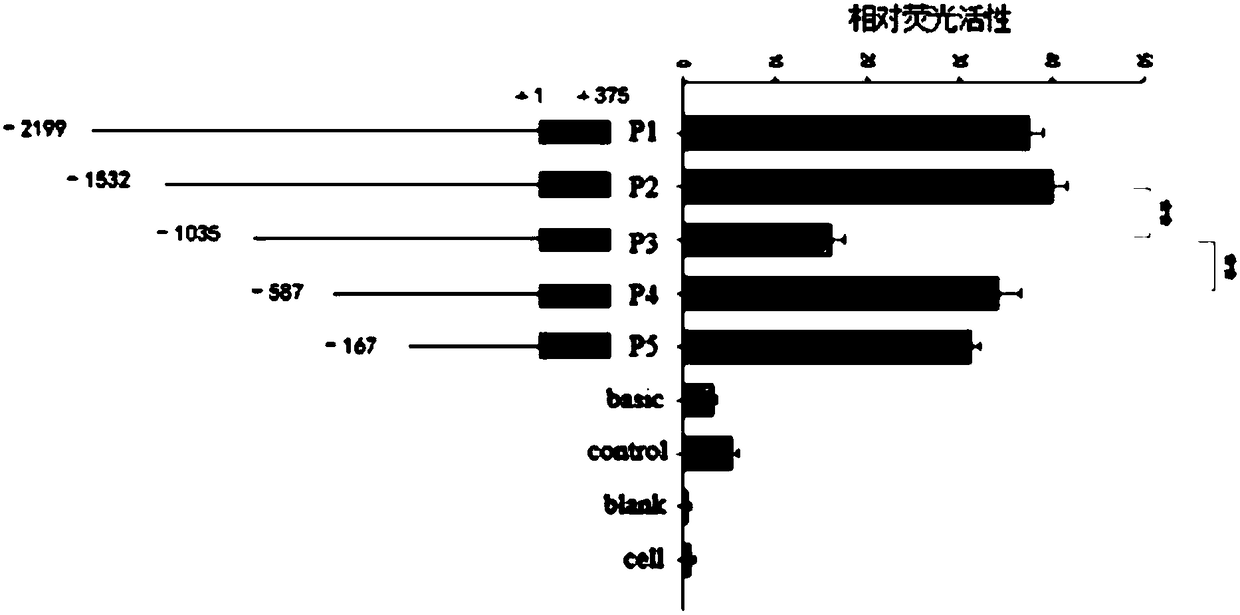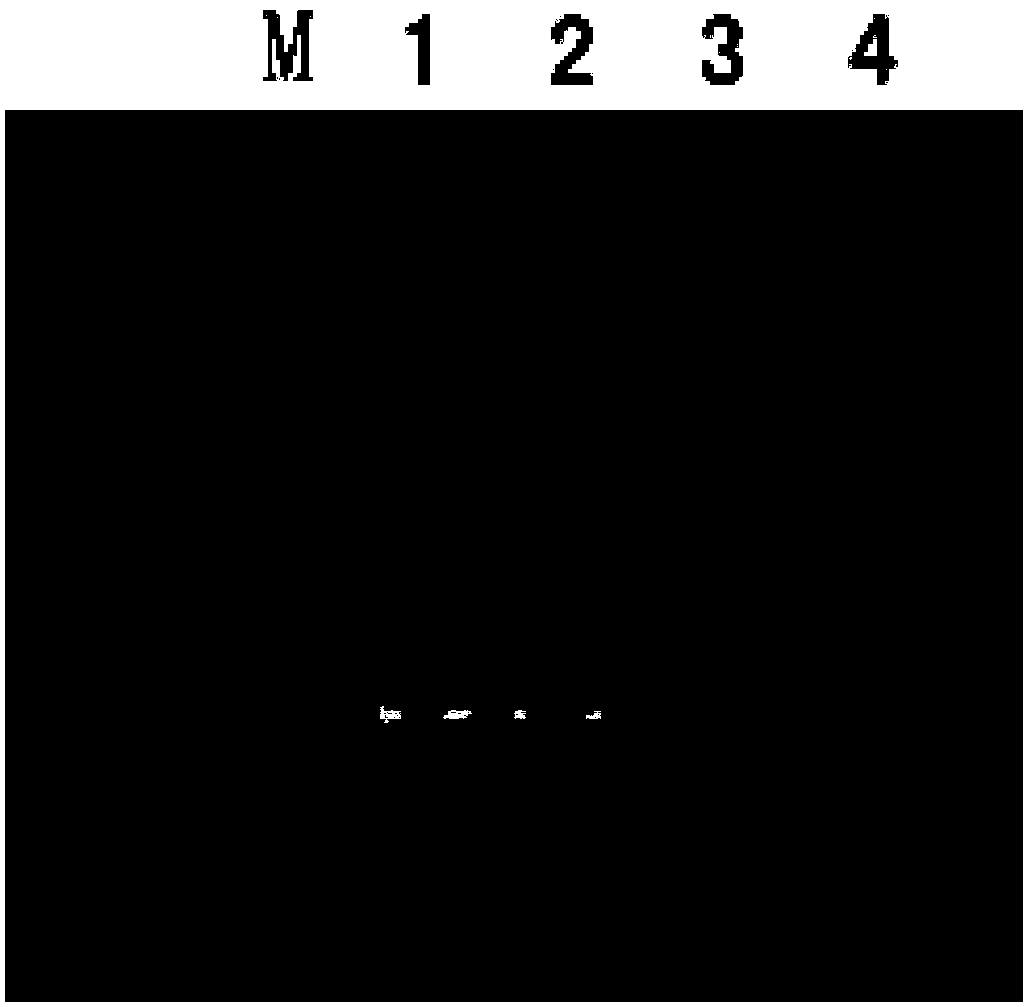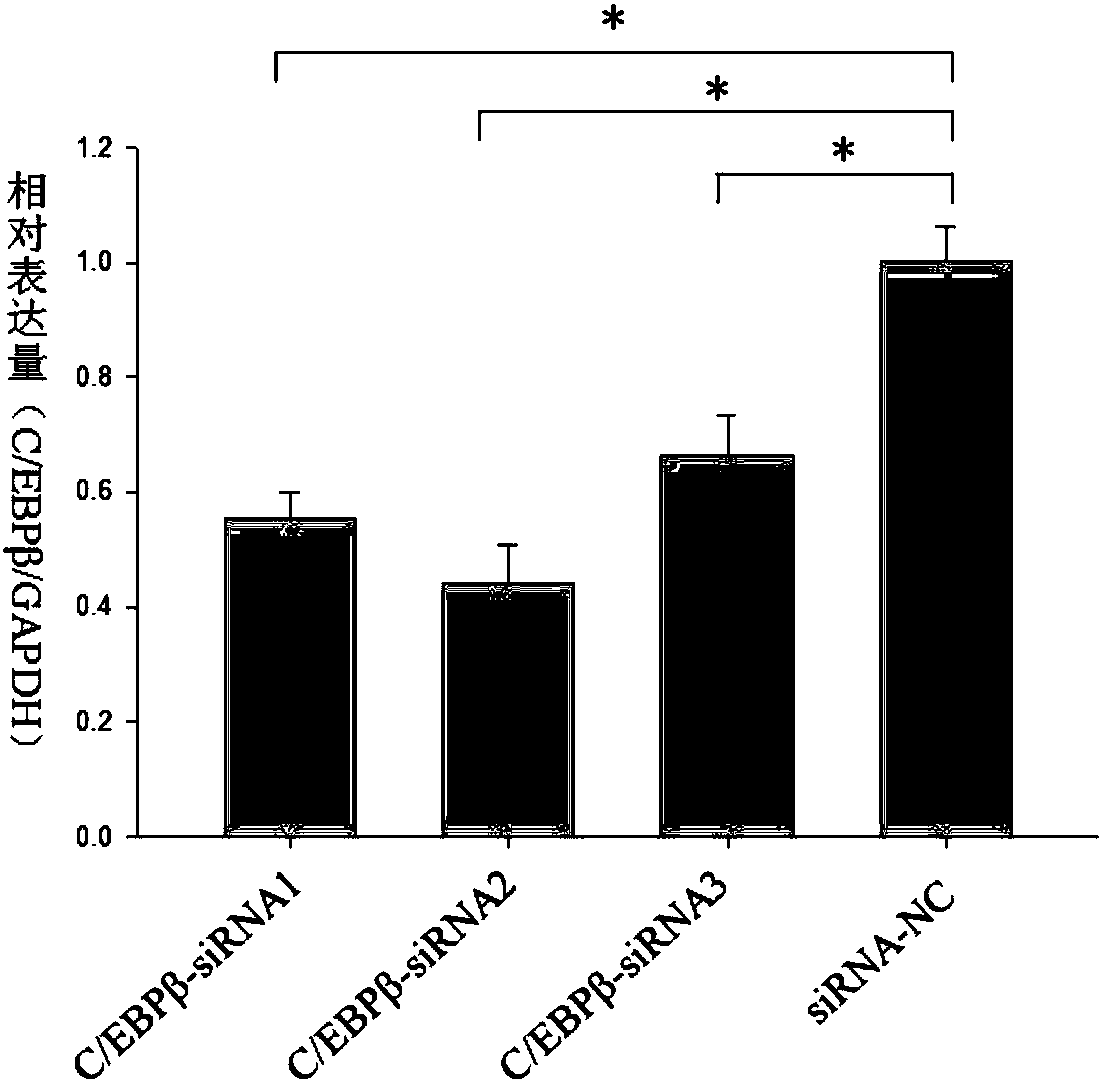The application of STAT3 in porcine ovarian granulosa cells
A technology of granulosa cells and ovaries, which is applied in the application field of STAT3 in porcine ovary granulosa cells, can solve the problem of high cost of live pig experiments, and achieve reliable results and well-designed effects
- Summary
- Abstract
- Description
- Claims
- Application Information
AI Technical Summary
Problems solved by technology
Method used
Image
Examples
Embodiment 1
[0037] Example 1 Construction of STAT3 promoter reporter gene recombinant vector
[0038] (1) Use Primer5 to design primers, and use the extracted pig ear DNA as a template to amplify the 5' regulatory region of STAT3; the amplified fragments are purified and recovered, connected to the pMD18T vector (purchased from Takara), transformed, screened, sequenced and identified After being correct, the common plasmid was extracted and named as T-STAT3.
[0039] (2) BioEdit software analysis found that the 5' regulatory region sequence of STAT3 gene did not have MIu I and Xho I restriction endonuclease sites, but pGL3-basic Vector had MIu I and Xho I enzyme sites. Primer5 designed 5 pairs of primers for the missing fragment of the 5' regulatory region of the STAT3 gene, and the upstream and downstream primers were respectively added with MIu I and Xho I restriction site sequences. Using the T-STAT3 common plasmid as a template, PCR amplification; similarly, each missing fragment was...
Embodiment 2
[0053] Example 2 Culture and transfection of ovarian granulosa cells
[0054] (1) Collect healthy sow ovaries at Guangzhou Jiahe Slaughterhouse, place them in PBS buffer (on ice) containing 1% (v / v) double antibody, and quickly transport them back to the laboratory for processing;
[0055] (2) Wash the ovaries outside the cell room with PBS containing double antibodies, place them in a beaker, and put them into the transfer window;
[0056] (3) Wipe the ultra-clean table of the cell room with alcohol, pick up the ovary with tweezers, draw the follicle fluid with a syringe, put it into a centrifuge tube containing 5mL of DMEM culture medium, and extract 9mL of the follicle fluid from each tube;
[0057] (4) Centrifuge at 1000rpm for 5min, discard the supernatant, add 5mL PBS, mix by pipetting, and wash twice;
[0058] (5) Prepare complete medium: 89% DMEM, 10% serum and 1% double antibody, mix up and down;
[0059] (6) Add 5 mL of complete medium to resuspend the cell pellet;...
Embodiment 3
[0069] Embodiment 3qRT-PCR
[0070] The qRT-PCR detection of genes in the present invention uses Maxima SYBR Green qPCR Master Mix (2X) kit (Thermo Scientific Company). In the experiment, the comparative Ct value method was used to detect the content of the gene in the sample, and the specific calculation formula was as follows:
[0071] Relative gene expression = 2-{-〈﹙Ct value of the target gene in the control group﹚-﹙Ct value of the internal reference gene in the control group﹚>}
[0072] The detection gene uses GAPDH as an internal reference, and the qRT-PCR primers used in the present invention are:
[0073] qRT-PCR-STAT3Forward: 5′-GGGCTTTATCAGTAAGGAGA-3′;
[0074] Reverse: 5'-GGAATGTCAGGGTAGAGGTA-3';
[0075] qRT-PCR-C / EBPβForward: 5′-CGGACTGCAAGCGGAAGGAGGA-3′;
[0076] Reverse: 5′-GGCTGGACGACGAGGATGTGGA-3′;
[0077] qRT-PCR-GAPDH Forward: 5′-TCCCGCCAACATCAAAT-3′;
[0078] Reverse: 5′-CACGCCCATCACAAAACAT-3′;
[0079] The total RNA of cells was extracted according...
PUM
 Login to View More
Login to View More Abstract
Description
Claims
Application Information
 Login to View More
Login to View More - R&D
- Intellectual Property
- Life Sciences
- Materials
- Tech Scout
- Unparalleled Data Quality
- Higher Quality Content
- 60% Fewer Hallucinations
Browse by: Latest US Patents, China's latest patents, Technical Efficacy Thesaurus, Application Domain, Technology Topic, Popular Technical Reports.
© 2025 PatSnap. All rights reserved.Legal|Privacy policy|Modern Slavery Act Transparency Statement|Sitemap|About US| Contact US: help@patsnap.com



